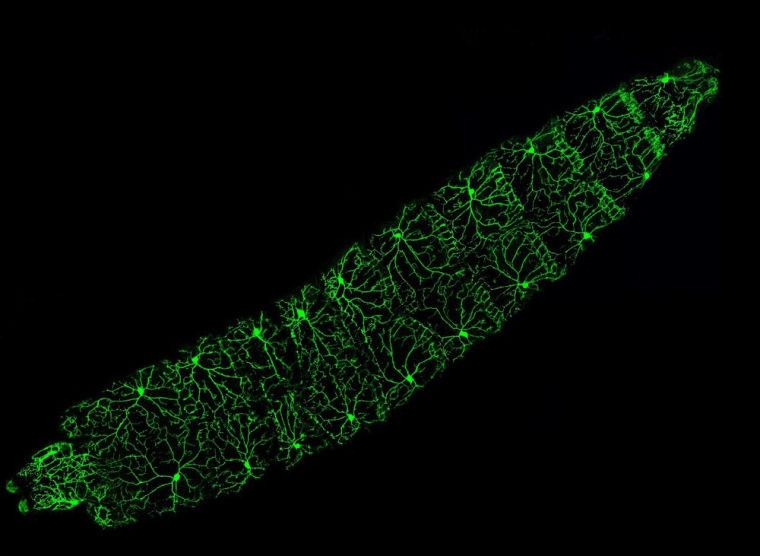Light-sensitive cells lining the bodies of fruit fly maggots allow the larvae to squirm away from bright light, a new study finds.
Good thing, as long exposure to intense light can kill a baby fruit fly.
Light-phobic fruit fly larvae have primitive eye structures called Bolwig's organs that alert them to brightness. But researchers at the University of California at San Francisco, noticed that cells in the fruit fly's body seemed to respond to light as well. Even stranger, fruit fly larvae genetically engineered to have nonfunctional Bolwig's organs writhed away when researchers shone light on them.
The strange reaction led researchers to discover special light-sensitive neurons lining the body wall of fruit fly maggots. The findings were pure "serendipity," said study researcher Yuh Nung Jan, a UCSF neurobiologist.
"People have been studying fruit flies for 100 years," Jan told LiveScience. "Yet there is this major sensory modality and we didn't know about it."
Lights out
After a researcher in Jan's lab noticed maggot body cells responding to light, the team went on a hunt for the precise cells responsible and the exact wavelengths of light those cells would respond to. They started by shining lights of different intensities on fruit fly larvae both with and without Bolwig's organs.
As the light dimmed, the maggots were less vigorous in squirming away, especially if they had no Bolwig's organs. But at high intensity, the maggots didn't need their primitive eyes: They avoided bright light whether they had Bolwig's organs or not.
The researchers also tested different wavelengths of light and learned that the body cells were most sensitive to blue, violet and ultraviolet light. Larvae body cells didn't respond to red or green light, nor did the researchers detect any uptick in temperature within the cells, confirming that the larvae weren't simply recoiling from heat.
Next, the researchers injected a chemical into the larval body wall that would fluoresce, or light up, in response to calcium, an important element of neuron signaling. Then they exposed the body cells to more light. Only one type of cell lit up: a type of neuron called class IV dendritic arborization neurons. The neurons line the body wall like tiles, almost like the cells at the back of the human retina, Jan said.
"It functions like a retina, except it's not image-forming, it's just sensing light," Jan said.
How do your neurons grow?
Previously, the light-sensitive neurons were known to react to heat and wasabi, the Japanese horseradish that can make human mouths burn. Both are stimuli that could harm the growing larvae, much like bright light, Jan said.
"It makes sense in hindsight, because larvae usually they dig their heads into food, so their Bolwig's organ actually would be inside the food. So how would they know that part of their body was exposed to light? " Jan said. "This would be a system to let them know."
A similar system has been discovered in the body of the roundworm C. elegans, which also dies when exposed to light for too long.
Jan and his colleagues are interested in the development of neuron dendrites, the spindly bits of nerve cells that reach out to communicate with other nerve cells. The light-sensitive fruit fly cells provide a good opportunity to investigate that development because not only are they "beautiful morphologically," Jan said, it's easy to expose the cells to different levels of light to see how they respond and develop.
